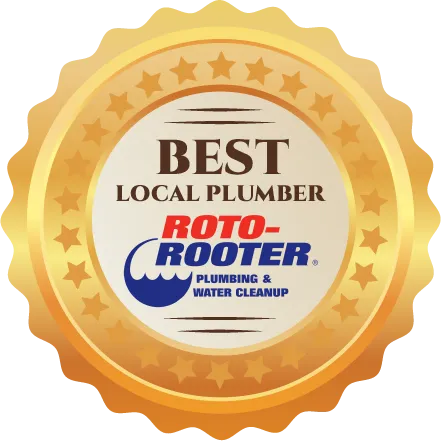Maximize Your Water Heater’s Lifespan in St George
To maximize your water heater’s lifespan in St. George, it’s important to understand the unique challenges posed by the local climate and water quality. The arid desert conditions can lead to increased sediment buildup in traditional tank water heaters, while the mineral content in the water can affect both tankless and heat pump models. Each type of water heater requires specific maintenance practices tailored to these local factors.
Regular inspections and adjustments can significantly impact how well your unit operates over time. For instance, flushing your tank regularly can help prevent sediment accumulation, which is particularly important in this area. Additionally, checking the anode rod, which helps prevent corrosion, is crucial in a region where hard water is common.
So, what are the best steps you can take to ensure your water heater runs efficiently for years to come? Let’s explore some essential strategies together, focusing on local conditions that can influence your water heater’s performance. Regular maintenance, including temperature checks and ensuring proper insulation, can help extend the life of your unit and keep it functioning effectively in the St. George environment.
Understand Your Water Heater Type
How well do you understand the type of water heater in your home? Knowing whether you have a tank, tankless, or heat pump water heater is essential, especially considering the unique climate and energy challenges in our area.
Each type operates differently and has its own pros and cons. For instance, tank water heaters store a set amount of hot water, which can be a limitation during peak usage times, particularly in the colder months when demand rises.
In contrast, tankless water heaters offer continuous hot water, but they may not be able to keep up with multiple simultaneous uses, like showers and dishwashing.
Heat pump water heaters are known for their energy efficiency, but they require specific installation conditions, which may be difficult to meet in some homes due to space or climate restrictions.
Familiarizing yourself with your water heater’s type can help you manage its usage effectively and anticipate potential issues that could arise with seasonal changes. Understanding these differences is crucial for enhancing your home’s comfort and energy efficiency.
Regular Maintenance Checks
While it mightn’t cross your mind frequently, regular maintenance checks are vital for extending the lifespan of your water heater and ensuring its efficient operation, especially in areas where hard water is prevalent.
Scheduling annual inspections can help you identify minor issues before they develop into expensive repairs. In regions prone to freezing temperatures, it’s essential to examine the pressure relief valve, check for leaks, and ensure there’s adequate insulation around the unit to prevent heat loss.
Additionally, testing the thermostat settings is important for maintaining peak performance, particularly during the colder months when demand for hot water increases.
Don’t overlook the inspection of the anode rod; replacing it can prevent corrosion, particularly in communities with aggressive water conditions, and enhance the longevity of your heater.
Keeping detailed records of these maintenance activities can assist in tracking your water heater’s health over time.
Flush the Tank Periodically
Regularly flushing your water heater tank is crucial for maintaining its efficiency and prolonging its lifespan.
In areas with hard water, sediment and mineral buildup can accumulate more rapidly, leading to decreased performance and potential damage.
To keep your heater running smoothly, follow these steps:
- Schedule a Flush: Aim to flush your tank at least once a year, especially if you live in regions where mineral content in the water is high. This practice helps prevent sediment from settling and impacting performance.
- Turn Off the Power: Before you begin, ensure the power supply to your heater is turned off to guarantee safety during the process.
- Use the Drain Valve: Attach a hose to the drain valve at the bottom of the tank, directing the water and sediment flow safely away from your home.
Monitor the Temperature Settings
Monitoring the temperature settings on your water heater is vital for both safety and energy efficiency, especially in regions where water temperature can fluctuate seasonally.
It’s recommended to keep the temperature at 120 degrees Fahrenheit. This setting not only prevents scalding, which is particularly important for families with young children, but also reduces energy consumption.
In areas with colder climates, setting the temperature too high can lead to increased energy use, putting additional strain on your unit and potentially leading to premature wear.
Regularly checking your water heater’s thermostat is important to ensure it’s functioning correctly. If you notice any fluctuations or if the temperature seems inconsistent, it may be wise to consult a local professional for assistance.
Additionally, it’s beneficial to educate your family about safe water temperatures, particularly in communities where hot water scalding incidents are more common.
Insulate Your Water Heater
Keeping your water heater at the right temperature is just one part of ensuring its longevity; insulating your water heater can make a significant difference as well.
In regions with colder climates, proper insulation becomes even more vital to combat the challenges of heat loss during freezing temperatures. Insulation helps maintain temperature, reduces energy costs, and extends the lifespan of your unit.
Here’s how you can effectively insulate your water heater:
- Insulate the Tank: Use a water heater blanket specifically designed for your model. This will help minimize heat loss, especially in areas where winter temperatures can dip significantly.
- Wrap the Pipes: Insulate the hot and cold water pipes connected to your heater. This is particularly important in locations where pipes are exposed to cold air, as it prevents heat loss and reduces the risk of condensation forming.
- Check for Drafts: Ensure the area around your heater is sealed against drafts. This is crucial in older homes or basements where air leakage is common, as it can greatly decrease energy efficiency.
Inspect and Replace Anode Rods
Inspecting and replacing anode rods is crucial for maintaining the health and longevity of water heaters in areas with hard water, like many regions in the Midwest.
The high mineral content in the water can lead to quicker deterioration of these rods, which are typically made of magnesium or aluminum and serve to prevent rust and corrosion inside the tank.
It’s advisable to check the anode rod every one to two years, especially if you live in a location with particularly hard water or experience heavy usage.
If you notice significant corrosion or if the rod is less than half an inch thick, it’s time to replace it.
Timely replacement of the anode rod can significantly extend your water heater’s lifespan, helping to avoid costly repairs or the need for an early replacement.
Don’t overlook this simple maintenance task; it plays a vital role in ensuring that your water heater operates efficiently and reliably for many years, particularly in environments where water quality can pose challenges.
Address Leaks and Corrosion Promptly
Address Leaks and Corrosion Promptly
Leaks and corrosion can escalate quickly, making it crucial to address these issues promptly to maintain your water heater’s efficiency and lifespan.
In areas with high humidity or fluctuating temperatures, these problems can be more pronounced. Ignoring them can lead to significant repairs and reduced performance.
Here are three steps you should take:
- Inspect Regularly: Regular inspections are vital, especially in regions prone to moisture. Check for leaks around the tank and pipes. If you notice water pooling, it’s time to take action.
- Examine for Corrosion: Look for signs of rust or discoloration on the tank and fittings. These indicators suggest that corrosion may be starting to develop, particularly in environments with high mineral content in the water.
- Act Fast: If you find any leaks or signs of corrosion, address them immediately. Delaying repairs can worsen the damage and significantly shorten your water heater’s lifespan.
Seek Professional Help When Needed
When you experience ongoing issues with your water heater, it’s crucial to seek professional assistance instead of attempting to fix the problem on your own.
In regions with hard water, like many areas, mineral buildup can exacerbate water heater issues, leading to reduced efficiency and potential damage. Attempting DIY repairs can result in further complications or safety risks. Qualified technicians possess the expertise and tools necessary to accurately diagnose and address these problems.
They can identify underlying issues, such as malfunctioning thermostats or significant sediment buildup, which may not be immediately apparent to the untrained eye.
Furthermore, professionals can offer valuable maintenance tips tailored to your local environment, helping to extend the lifespan of your water heater.
If you notice unusual sounds, inconsistent temperatures, or leaks, don’t hesitate to contact a professional. Taking swift action can save you both time and frustration while ensuring your water heater operates effectively for many years.
Conclusion
To maximize the lifespan of your water heater in St. George, it’s essential to understand the specific challenges posed by the local climate and water quality. The area’s hard water can lead to mineral buildup inside the tank, so regular maintenance is crucial. Flushing the tank periodically will help remove sediment and prevent inefficiencies.
Additionally, ensure that your temperature settings are appropriate for the needs of your household, as excessive heat can strain the system. Insulating your water heater not only improves efficiency but also helps counteract the effects of the warmer climate.
Be vigilant for signs of leaks and corrosion, especially given the region’s temperature fluctuations. Replacing anode rods when necessary can further protect your unit from deterioration. If you encounter any issues or are unsure about maintenance tasks, don’t hesitate to seek professional assistance. By taking these proactive steps, you can enhance your water heater’s efficiency and longevity, ultimately leading to savings over time.
Tags





